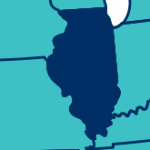Priorities
 Catalyst for Dynamic Change
Catalyst for Dynamic Change
From car services to shopping to career planning, digital tools and resources have dramatically pivoted every aspect of our personal and professional lives. Similarly, the advent of new technologies and increased access to robust connectivity is reshaping the K-12 landscape for teaching and learning. School districts nationwide are leveraging digital instructional materials and resources to deliver transformative and impactful personalized learning opportunities for students and to enhance the administrative coordination of school business. Teachers are no longer confined to the front of their classrooms, delivering content to rows of students restricted to their desks. Instead, they are fostering interactive and collaborative student- led discussions and engaging their students in hands-on, project-based and problem-based learning exercises that often extend beyond the walls of the classroom. Why? School systems are striving to meet the needs of the modern workforce including the need to develop life-long learners that can adapt to ever changing jobs and careers as technology continues to disrupt the digital age workplace.
Digital resources such as online learning management systems, real-time data analytics tools, videos and web-based collaboration suites enable educators to enhance students’ learning experiences in ways that were previously impossible. Technology affords educators the opportunity to choose from a multitude of pedagogical approaches, including project-based, blended, virtual, game-based and collaborative-based learning to personalize education for students. Technology provides educators the freedom and flexibility to explore and engage with new technologies in creative and innovative ways in support of personalization and workforce development.
 Illinois: McHenry Elementary School District 15 is preparing grade-schoolers for the jobs of tomorrow that will require creativity and discovery through hands-on innovative STEM and STEAM programming. District 15 provides students with educational opportunities that foster engagement, interaction and achievement through cutting-edge technology utilizing a personalized learning approach. The district provides students access to collaborative spaces offering sequential K-8 cross-curricular opportunities that allow innovation and provide project-based exploration. Program URL Program Video
Illinois: McHenry Elementary School District 15 is preparing grade-schoolers for the jobs of tomorrow that will require creativity and discovery through hands-on innovative STEM and STEAM programming. District 15 provides students with educational opportunities that foster engagement, interaction and achievement through cutting-edge technology utilizing a personalized learning approach. The district provides students access to collaborative spaces offering sequential K-8 cross-curricular opportunities that allow innovation and provide project-based exploration. Program URL Program Video
 Kentucky: Fayette County Schools. The Learning Center (TLC) employs a wrap- around approach to individualize student needs is an innovative way to educate “at-risk” students. Each student is individually equipped with digital tools, an adult mentor and a host of on and off campus learning opportunities linked to career interests. Teachers focus on mentoring and mastery of academic and social/emotional skills needed to build self-efficacy. One of the most unique aspects of TLC is eOS (employability operating system) where teachers, counselors, therapists, parents and community partners measure, teach, reteach and communicate employable behaviors and expectations.
Kentucky: Fayette County Schools. The Learning Center (TLC) employs a wrap- around approach to individualize student needs is an innovative way to educate “at-risk” students. Each student is individually equipped with digital tools, an adult mentor and a host of on and off campus learning opportunities linked to career interests. Teachers focus on mentoring and mastery of academic and social/emotional skills needed to build self-efficacy. One of the most unique aspects of TLC is eOS (employability operating system) where teachers, counselors, therapists, parents and community partners measure, teach, reteach and communicate employable behaviors and expectations.
If we teach today as we taught yesterday, we rob our children of tomorrow. – John Dewey, Education Reformer

Wisconsin schools have utilized $62.1 million dollars in federal E-rate funding. Since 2016, the state has seen an 86% increase in fiber connections within Wisconsin school districts. Using these high-speed internet connections, Wisconsin school districts are realizing opportunities for students and communities. Districts around the state are implementing STEM programming, like Watertown Wisconsin’s K-8 STEM program. Neenah School District is currently integrating engineering into all elementary grades and supporting community learning by hosting community-wide STEAM Saturdays. For instance, Phelps School District implemented a 6-12 blended learning program with the Wisconsin Digital Learning Collaborative partners. Smaller rural schools, such as the Webster school district, recognized the need to extend connectivity and the school day by adding hotspots to buses, and offer students access to virtual field trips, transcripted courses, and advanced learning via video and web enabled learning.
